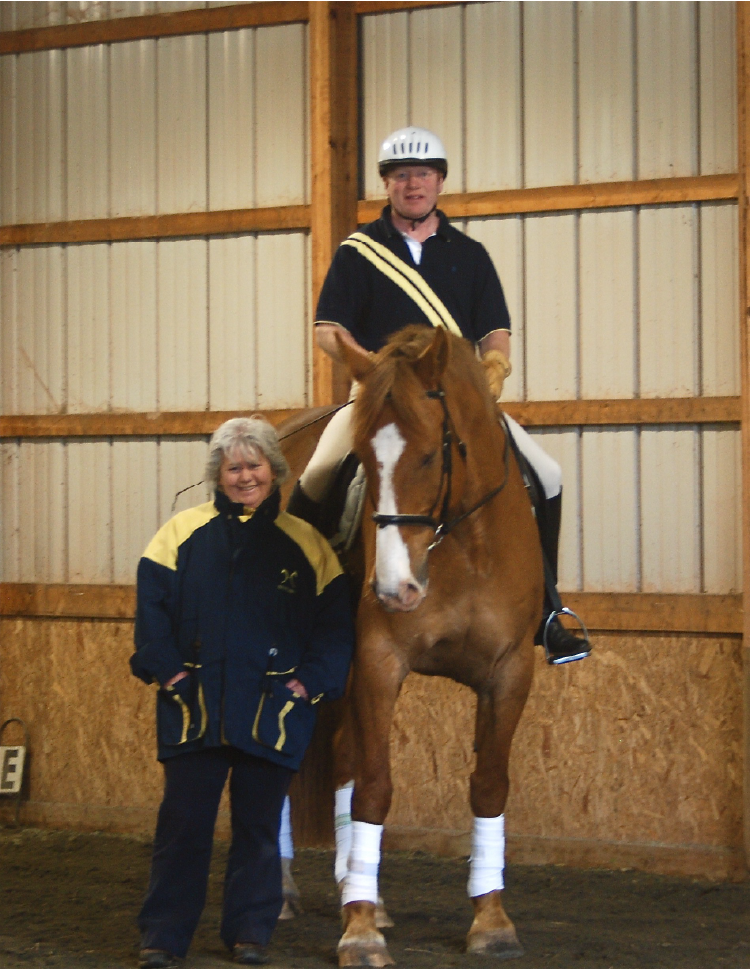The Dressage Center Line Scurry
by Nikki Alvin-Smith
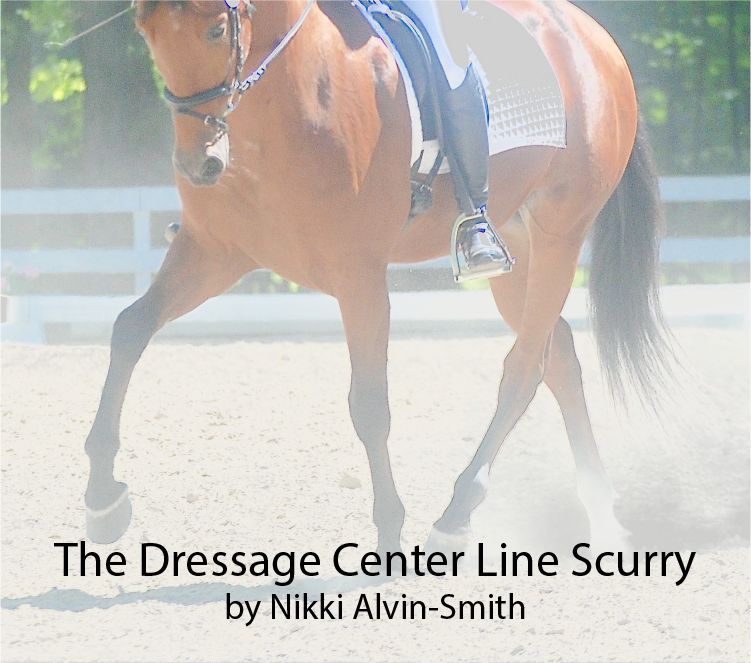
Are you guilty of scurrying down the center line in your dressage tests? The rider who scurries and shuffles their noble beast around the dressage ring is often sighted in lower-level tests. It would seem an easy issue to fix with the usual admonishments from a trainer to the student to simply “use more leg” and “get your horse moving forward”. But it’s not quite as easy as that is it?
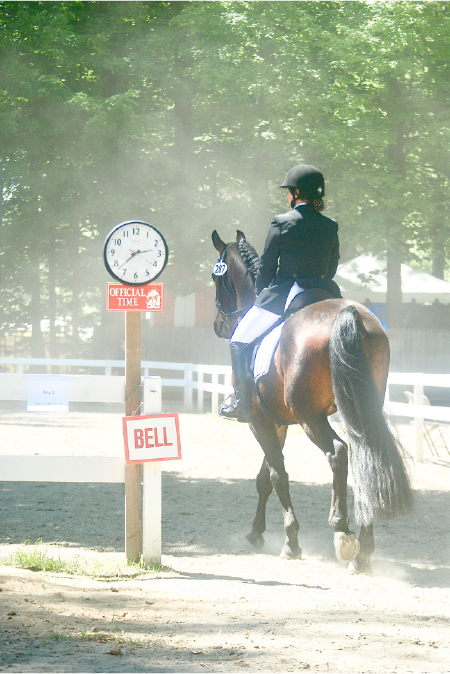 Crisp canter departs, clear cut transitions and precise halts are all elements required to achieve a high-scoring dressage test. Despite much practice and preparation at home, the horse and rider who are young in their training are often baffled by the demands made on their level of talent and training prowess when it comes time to strut their stuff and enter at A.
Crisp canter departs, clear cut transitions and precise halts are all elements required to achieve a high-scoring dressage test. Despite much practice and preparation at home, the horse and rider who are young in their training are often baffled by the demands made on their level of talent and training prowess when it comes time to strut their stuff and enter at A.
There is much super advice available on how to make a perfect halt. Notions of ‘riding into the hind leg’ and counting strides to the point in the arena where immobility is required, sitting erect and holding the horse still with your legs etc. But achieving the square straight halt on a neophyte dressage mount can make the rider feel their horse has suddenly acquired seemingly ‘swarm of bees’ legs.
A well-executed halt will not only boost your dressage scores twice with an accessible two scores of 10, but it will also serve as notice to the judge that you mean business and know your dressage stuff. First impressions and all that jazz.
The test may continue reasonably well despite wobbly departs from halt to walk or trot, U-type turns that wiggle before taking another direction and earnest efforts to ride into the corners of the ring and make transitions at the letter.
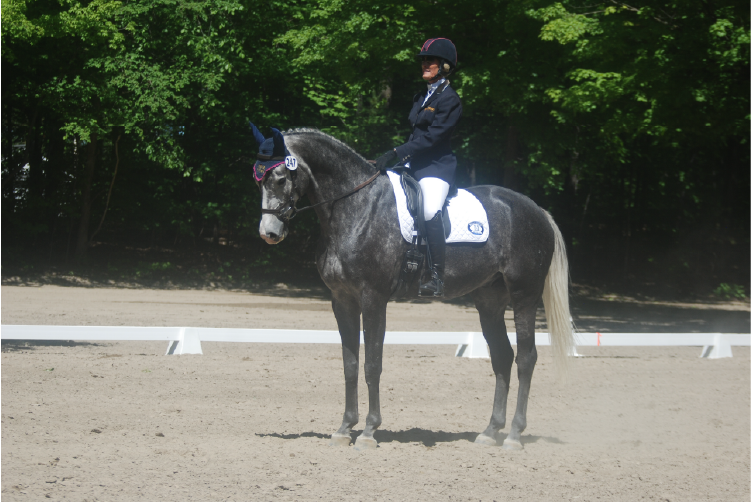
For advanced riders their knowledge that you actually don’t aim straight across a diagonal directly to a letter during an extension or lengthening, that know how to use soft eyes to guide the horse and their certain understanding that you don’t aim to make a transition at the letter but a stride before is advice that seems to escape the newbie dressage rider. Perhaps because their ‘coach’ or ‘instructor’ or ‘trainer’ isn’t really clued in about the nuances of dressage test riding.
Drifting about the dressage arena between movements is where the rider often coasts along, grateful that there is a moment’s respite from having to action a change in gait, lead, or tempo. Of course, this is really the time where the rider should be the most active, setting up their mount for success for the next defined step down the test sheet. Trainers will suggest, “You must ride every stride,” and harass the student not to, “stop being proactive” and the horse will likely be half-halted half to death. The rider’s lower leg banging or tapping relentlessly on the horse’s side, making their steed numb to the aid and finding themselves floundering to subtly tap the horse with the whip without losing their grip on the reins.
If any of this sounds familiar to you as a rider who is setting out to conquer the dressage test and enjoy the experience of competitive dressage then you are not alone. Aside from the tension and nervous energy both horse and rider will likely experience at their first few shows, the added worry of going off course at C or making a blunder at B trying desperately to remember the test plan is something all riders have experienced at some point in their careers.
Frankly, you don’t ever get it right all the time, even when you are competing at the highest echelons of the sport of dressage.
But there is more art to competition dressage than it might at first appear. Not just the art of classical training such as having the proper foundation to use your seat to control the horse and using slight variances in breathing patterns to change cadence and adjusting your weight distribution to instill direction, but the art of showmanship.
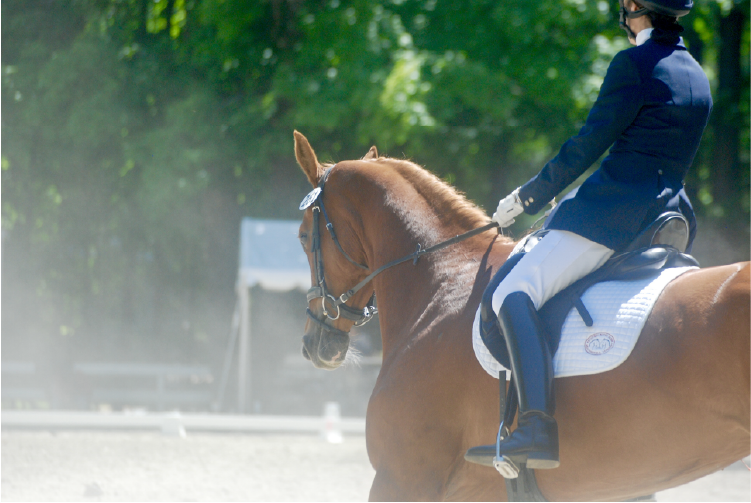
Prerequisites for success in the show ring such as having a truly independent seat, a sound horse and horse and rider both displaying a confident disposition are not innate talents to anyone. There is nothing static about dressage training and competition riding. There is a constant state of transition between strides throughout the learning process and that includes work in the show ring.
While the word stationery states, “one you get there you stay there”, the reality is that even when you become a proven successful talent competing at advanced levels in sport you are in a constant state of flux. Horses are the most brilliant of creatures at keeping you humble, and the idea that you always need to expect the unexpected is well-founded.
If you are a rider guilty of scurrying into the dressage arena and shuffling around the test don’t give up. It is the same for everyone just on a different level. Keep working on the pre-requisites, hone your craft and most importantly, smile and enjoy the ride.
Happy Dancing!
About the author: Nikki Alvin-Smith is an international Grand Prix dressage trainer/clinician who has competed in Europe at the Grand Prix level earning scores of over 72%. Together with her husband Paul, who is also a Grand Prix rider, they operate Willowview Hill Farm, a private horse breeding/training farm in Stamford, NY.
